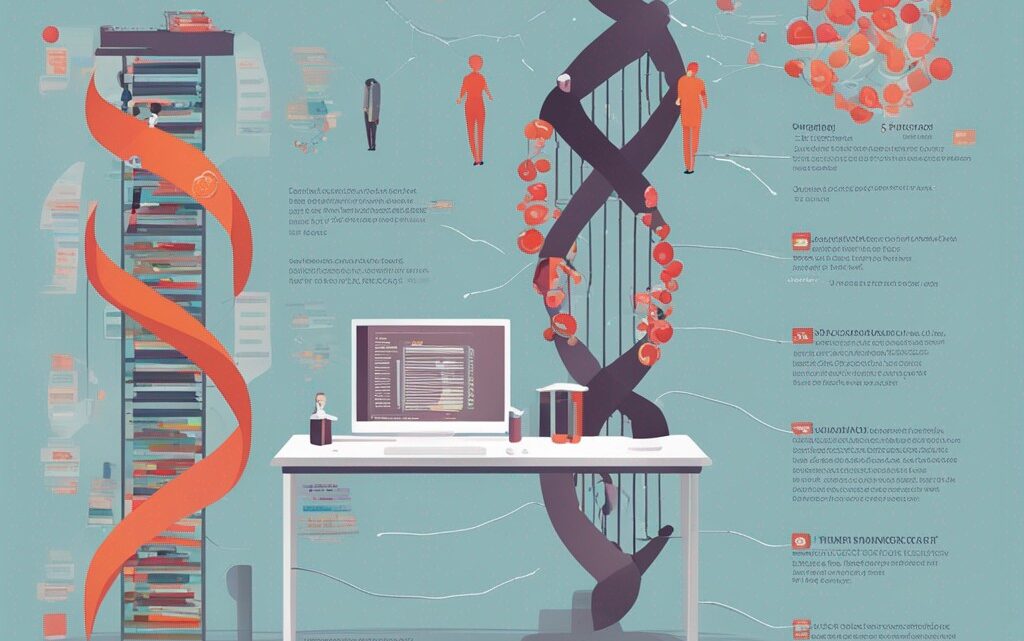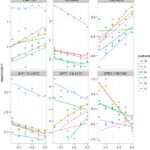
Guide to Learning and Mastering Bioinformatics
September 23, 2023A Comprehensive Guide to Learning and Mastering Bioinformatics
While the title may seem somewhat paradoxical, acquiring knowledge in bioinformatics is far from being a linear journey. Imagine building a structure where bioinformatics is the pinnacle; the journey is peppered with numerous foundational elements and knowledge pillars that must be robust for proper understanding of bioinformatics. A common misstep is directly delving into bioinformatics tutorials and coding to analyze data. However, this expedited approach often leaves learners with a shaky foundation, causing many experimental biologists to abandon or improperly learn bioinformatics.
Initiating the journey to bioinformatics surprisingly involves stepping away from bioinformatics. Mastery in coding forms the bedrock of bioinformatics. More critically, proficiency in effective coding and absorbing generations-long coding patterns are quintessential to devising efficient solutions.
Bioinformatics, when viewed through a wider lens, shares considerable similarities with engineering. It’s about dissecting a problem, resolving each fragment using programming acumen, and eventually amalgamating the solutions to achieve the end goal. A common saying encapsulates this perfectly: “A proficient data scientist is essentially a proficient engineer.”
To traverse the bioinformatics landscape effectively, one must:
1. Grasp the Coding Basics:
Choose any language and imbibe the coding basics and problem-solving mechanisms integral to engineering. Once acquainted with problem-solving, adapting to different scripting languages becomes relatively trivial. For instance, DataCamp, with its interactive and focused courses, offers a superior learning experience in R and Python, concentrating on fundamental concepts, unlike other platforms laden with redundant information.
2. Hone Your Coding Skills:
Practicing is imperative. Platforms like LeetCode are invaluable for solving real-world problems. Aim to solve a mix of simple and medium problems to sharpen your bioinformatics-oriented coding skills. LeetCode is expansive, but sticking to the outlined goals, with additional exploration as needed, is advisable.
3. Acquire Bash/UNIX Skills:
Enter the realm of code-based operating systems. Bash and UNIX are pivotal for executing scripts and processes, acting as a universal language, especially relevant for pre-processing data. Explore bash scripting through DataCamp, and familiarize yourself with command lines via Terminal or Command Prompt.
4. Manage Environments & Packages Efficiently:
Like data scientists, bioinformaticians must configure their work environments meticulously before delving into data. Mastery over managing environments in conda and understanding libraries/packages is crucial. A quick YouTube tutorial can guide you through managing potential version conflicts effectively.
5. Initiate Jupyter Notebooks in R and Python:
Launching Jupyter Notebooks is your subsequent goal. It provides an interactive, organized coding environment, allowing continuous documentation of your progress. A short YouTube tutorial can acquaint you with Jupyter Notebooks basics efficiently.
6. Understand GitHub:
GitHub is essential for documenting your code effectively. Create an account and explore concise tutorials, like the one by ‘Roger Dudler’, to understand the GitHub basics and documentation process.
7. Learn Data Fundamentals & Choose Suitable Tutorials:
Understanding the fundamentals of data structures is crucial before selecting a tutorial. For Next-Gen Sequencing Data, basics of .fastq, .sam, and .bam files are essential. For variant calling, understanding .vcf and .bcf files is necessary. Review different data structures in tutorials and research them to comprehend their structure and data storage processes.


















